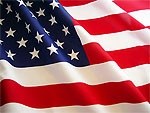Officials suggest new role for more capable Reserve force
 WASHINGTON (AFNS) -- Capabilities gained from a decade of combat have transformed military reserve components into a full-spectrum operational force that should be integrated into the active fighting force, a defense official said June 3.
WASHINGTON (AFNS) -- Capabilities gained from a decade of combat have transformed military reserve components into a full-spectrum operational force that should be integrated into the active fighting force, a defense official said June 3.
Paul Patrick, the deputy assistant secretary of defense for reserve affairs for readiness training and mobilization, briefed an audience here on the Comprehensive Review of the Future Role of the Reserve Component, approved by Defense Secretary Robert M. Gates recently.
The report calls on the Defense Department to institutionalize experiences and integration that has occurred among the National Guard and reserves over the last 10 years After operations in Iraq and Afghanistan are over, Mr. Patrick said.
The reserve components study was a product of the Pentagon's Quadrennial Defense Review, completed in 2010. The review called for a comprehensive look at the roles of the National Guard and reserves, and the balance between active and Reserve forces.
Dennis M. McCarthy, the assistant secretary of defense for reserve affairs, and Marine Corps Gen. James E. Cartwright, the vice chairman of the Joint Chiefs of Staff, were co-chairs in the review.
"The 21st century will require the United States to maintain an array of forces that can consistently win across the full spectrum of military operations on a global scale," Mr. McCarthy and General Cartwright wrote in the study foreword.
"These forces must be augmented by an accessible and ready pool of reinforcing and complementary capabilities, some of which will reside in our reserve components," they added, noting that "the policies and practices necessary to use the National Guard and reserve as the report suggests have not been fully institutionalized."
At the briefing, Robert Smiley, the principal deputy for readiness training and mobilization in the office of the assistant secretary of defense for reserve affairs, said 24 DOD agencies participated in the study, which offered seven suggestions for best use of the part-time military force.
In its current role -- as units, teams and individuals -- the reserve component participates in overseas conflicts, defends the homeland against external attacks and supports civil authorities in response to attacks or natural disasters.
In major combat operations it augments and reinforces the national effort with combat and support forces, supports combatant commanders worldwide and supports the efforts of the military services to preserve the all-volunteer force.
According to the report, several options exist for rebalancing capabilities in the total military force.
These include relying on the reserve component when building force structure to avoid shortfalls or expand capacity, assigning some recurring operational missions to reserve component units, and establishing long-term relationships between specific guard or reserve units and individual combatant commands.
"If you have the same people come back to the same well several times, we think that works out better, and this long-term relationship we think is a good deal," mr. Smiley said.
"(Intelligence) people do that now," he added. "A lot of (reserve) folks work on intel things, and the intel folks see the same people over and over again. It's a good idea to build these relationships."
Other options include establishing national or regional reserve units staffed with people who are willing to serve on active duty more often or for longer periods than usual based on individual missions, and using reservists to respond to emerging needs like cyber defense.
"How do I capture (an) engineer from Microsoft and say to him, 'You don't have to join the military all the time, but we need your expertise for this requirement?' Mr. Smiley asked.
"What can we do in the reserves?" he continued. "How do we recruit that person, how do we retain that person, and what's the proper way to compensate that person?"
The report also suggested integrating active and reserve forces into blended units, and assigning some institutional support tasks -- recruiting, organizing, supplying, equipping, training and others -- to reserve-component units, teams or individuals.
Without employing the Guard and Reserves, the report says, "the United States cannot continue to remain engaged globally, given DOD's current force structure."